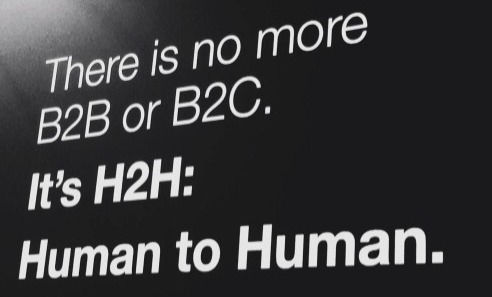3 Ways to leverage Marketing Automation With Human Connection
- Impari Francesco

- May 17, 2020
- 3 min read
Even in the digital age, person-to-person outreach remains essential.

Many businesses are now using marketing-automation tools to keep track of their client relationships and nurture their leads through the sales process. That includes:
customer relationship management (CRM) systems
automated email tools
social media-management apps
artificial intelligence (AI) chat bots that provide responses for simple queries and intake tasks
etc..
But sometimes people get complacent or overly impressed with the new capabilities of the latest technology, and forget about the all-important human element of the work. Many marketing people have developed unrealistic expectations of what automation can do for them; too many people are expecting their automation tools/platforms/systems to automatically turn their prospects into "sales-ready leads" on their own, without having their team do some of the heavy lifting.
In the same way, too many marketing pros today are reliant on automation, to the point that they’re forgetting about the limitations of the technology and overlooking opportunities to complement it with human connection.
Here are 3 examples of when the essential human element of a real-life salesperson complements marketing automation and enhances all the great things it can do to systematise and organise your processes.
1/ Targeting the correct decision maker

There are lots of automated tools and AI-driven platforms that are intended to help sales people do their B2B lead-generation research and identify the right decision makers within the right target organisations.
But no amount of web-based or AI-driven research can guarantee that the person you are emailing is truly the correct decision maker for what you sell -- even if their job title sounds right. You will never know until you pick up the phone.
2/ Creating that "human touchpoint" to build a relationship

Marketing-automation tools can be really helpful at organising your contacts, keeping track of notes and managing relationships over time at a high level, but your prospects often need authentic contact with a human being to help break through the clutter and noise of everyday life. This is where your automation tools can help hone in on the right people to call, but it requires a real person to take that next step and pick up the phone.
3/ Hearing the prospect's sales objections

Marketing automation tends to work silently; you send a batch of emails, test the response rates and maybe get a few inbound leads. But what happened to all the prospects who did not respond? Were they turned off by your marketing message? Are they skeptical about the promises of your solution’s key features and benefits? Or were they just too busy to read your message? You’ll never know unless you actually talk to people. This is another limitation of marketing automation that requires human connection and intuition. At some point, you need to start making some phone calls and getting direct insights into what people think about your company, your product and your value proposition. Sales phone calls are valuable not only for what you say to prospects, but for what you hear from them.
Conclusions
Don't assume that marketing automation can do everything for you in a seamless hands-off process that magically turns your leads into eager-to-buy customers.
There are still opportunities for prospects to let you know how ready they are to buy that benefit from a real person being more involved in the process. I don’t believe that marketing automation is going to eliminate human jobs; it’s going to change the jobs, and it might even create new ones. Because sales is a complex human endeavour, we’re still going to need hard-working, intuitive, emotionally intelligent people to do this work and build relationships with their fellow human beings.
About Holborn Consulting
Holborn is a Sales advisory boutique in London, specialised in supporting high-tech firms in the B2B market development.
Credits: Entrepreneur.com, Salesforce



Comments